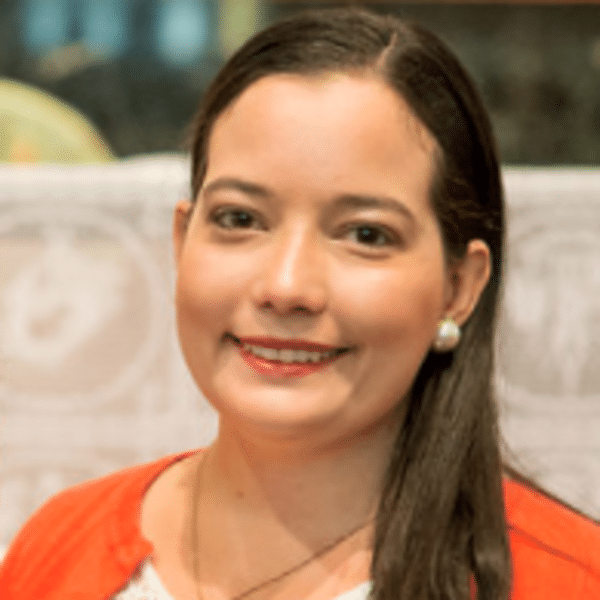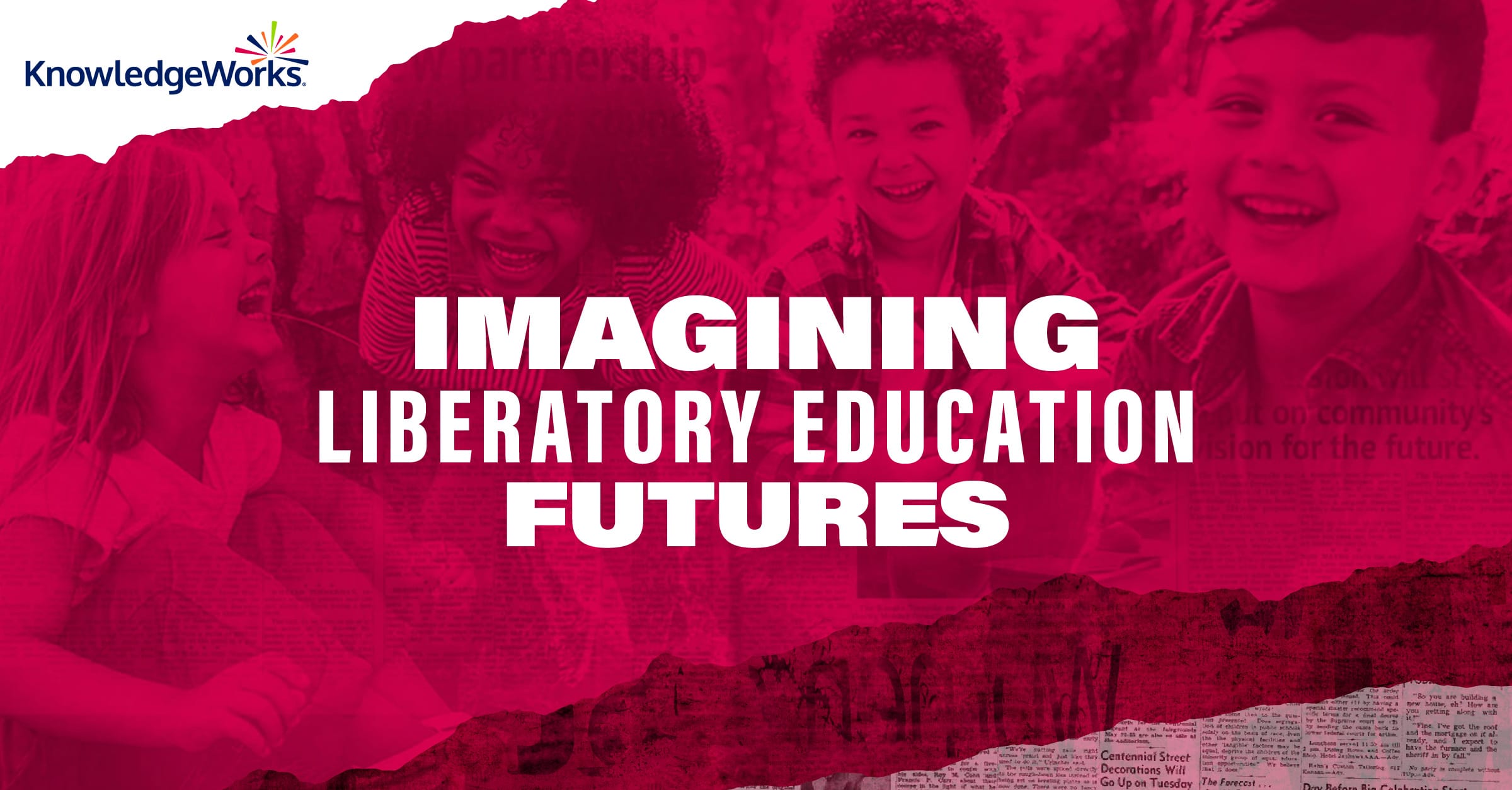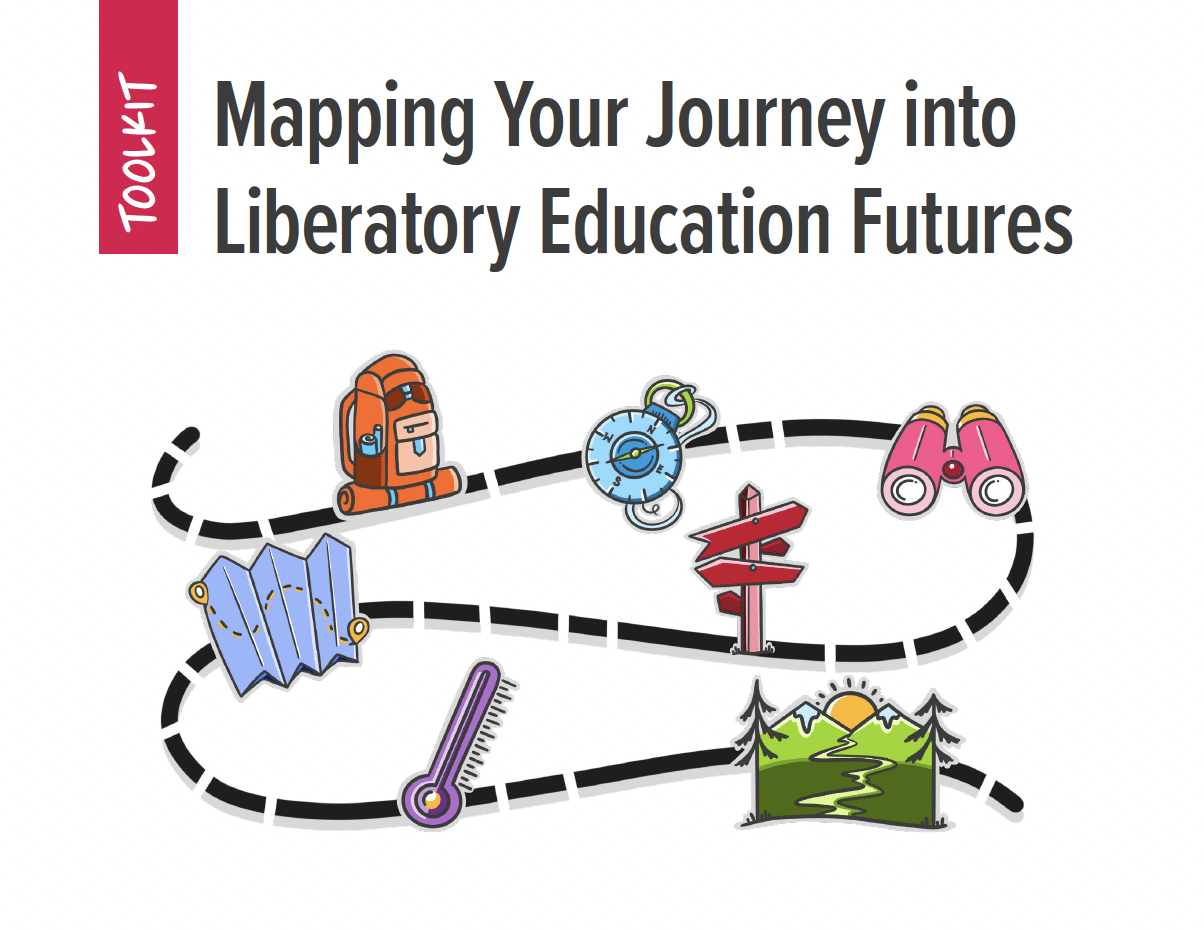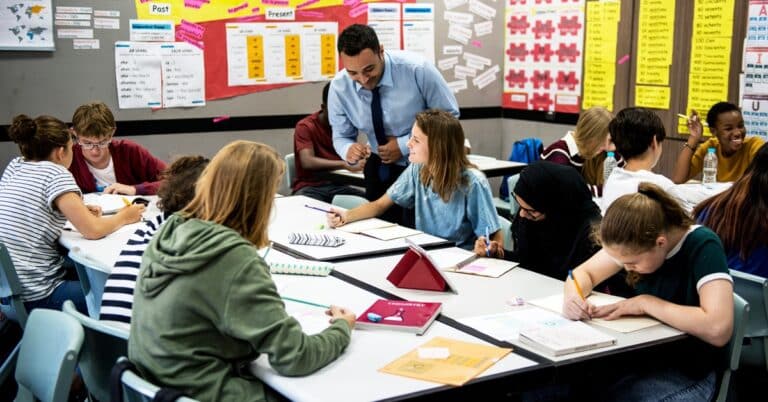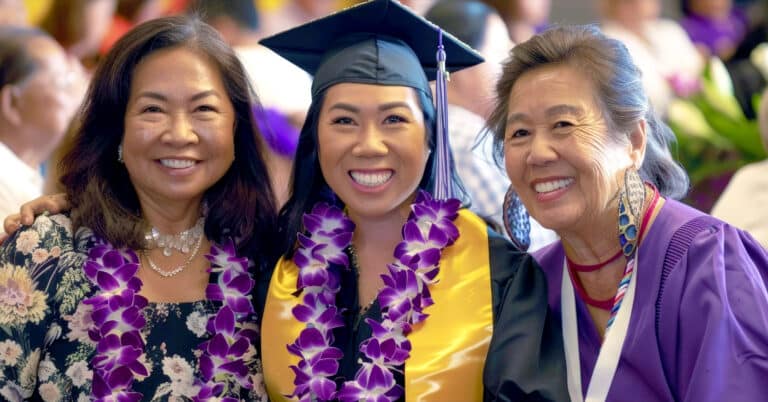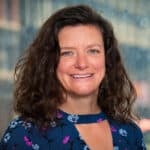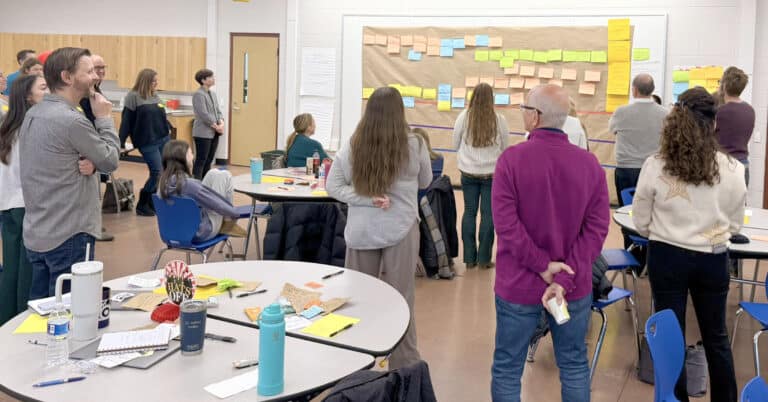When we talk about Imagining Liberatory Education Futures, one of the questions that we often hear is: “That all sounds great, but what does it look like in practice? Do you have any examples?” And unfortunately the short answer is: No, there are no examples of liberatory education systems. Now, the long answer is that there are practices, initiatives, teachers and schools that are embodying liberatory education values even when they do not know what that means.
We’ve asked Memorie White Mountain, executive director of Mní Wičhóni Nakíčižiŋ Wouŋspe (Defenders of the Water School), to share more about the ways in which they’ve created a space for liberatory education in a school that was built because the Oceti Sakowin people (Dakota, Lakota and Nakota – sometimes collectively referred to as the Sioux Nation) believed that they have the right to shape their present and future.
How did you develop of the vision and mission for the school – including who was involved and doing what?
The vision and mission was created by two of our founders, Alayna Eagle Shield and Kimimila Locke, as well as a local Elder, Virgil Taken Alive. The learning space, which is translated to “Wouŋspe” in Lakota and now replaces “Owayawa,” was created from the need to support children who were staying with their families in camp that stood in opposition to the Dakota Access Pipeline (DAPL) and became a beautiful way forward for my community because it was an example of education rooted in the land, the language and the lifeways of the Oceti Sakowin people. The youth within the camp named the space the “Mní Wičhóni Nakíčižiŋ Owayawa” (Defenders of the Water School).
Tell us about your collective vision.
Our collective vision for the Mní Wičhóni Nakíčižiŋ Wouŋspe (MWNW) was necessarily Oceti Sakowin and Indigenous-centered, but also coalitional and intersectional. We didn’t have the terms of abolitionist praxis, Indigenous cognizance or pedagogy at the time. However, there were many transformations happening far beyond educational initiatives and approaches in our teaching methods around social justice transformational education methods, Indigenous methodologies, transformational power, and felt knowledge that we were unpacking together and continue to unpack as we reclaim what education could and should be for Standing Rock.
Mní Wičhóni Nakíčižiŋ Wouŋspe Core Values
In Lakȟóta cosmology, “everything in the natural world has relationships with every other thing and the total set of relationships makes up the natural world as we experience it” (Deloria, 1992). The prayer – Mitakuye Owas’in – meaning “all my relatives,” conveys the concept that we are closely linked in a symbiotic set of relationships. This familial circle of life ties the Oceti Sakowin to all life forms. – Everything above, everything below, everything between. (V. Douville, 2010). (D.LeBeau 2012) To teach and understand that creatures, man, animals, birds, insects, reptiles, plants, water and air are integral to the survival of the people and earth as we know it is the heart of Lakȟóta lifeways. Mitakuye Oyasin reflects the physical, mental, spiritual, emotional and intuitive relationship that the Oceti Sakowin have with all aspects and elements of the environment.
Source: Oceti Sakowin Essential Understandings
How do learners and educators work or partner with communities to identify relevant problems to solve together?
The relationship between the Mní Wičhóni Nakíčižiŋ Wouŋspe, the broader community and other educational institutions is in need of improvement. In order to ensure that the school is providing culturally appropriate and culturally sustaining opportunities for students, while meeting educational milestones towards the graduation of students, communication is essential. There needs to be consistent communication between staff, teachers and other educational institutions. This communication could include feedback and support from Elders and knowledge keepers on the alignment of the school with Dakota and Lakota values and protocols.
In order to build better relationships, MWNW staff desire to focus on building community engagements to restore our values and traditions. This could include hosting events that bring together the school and other educational institutions to discuss ways to improve the relationship and create more culturally appropriate learning opportunities and collaborations.
Additionally, MWNW staff should work to create more opportunities for students to engage with their culture and traditions, such as hosting cultural events or providing access to traditional knowledge keepers. It is important that MWNW staff, teachers and other educational institutions work together to create a more culturally appropriate learning environment. By engaging with Elders and knowledge keepers, providing more opportunities for students to engage with their culture, and creating consistent communication between staff and teachers, maintaining the relationships between the MWNW school and community and other educational institutions.
Where are learners engaged in decision-making? What role do learners have in the evolution of the school?
Learning at Mní Wičhóni Nakíčižiŋ Wouŋspe is always student-led and student-centered. The founding team has studied leading examples of schools that rely on project-based learning, including the Health Leadership Academy in Albuquerque, New Mexico and the Avalon School in Minneapolis, Minnesota. Project offerings will be student-based, guided by our 13-month calendar, and developed in partnership with the community using the EdCafe method used at the Health Leadership Academy. Students will work closely with their wawichayaksapa, who will ensure that project work is rigorous and aligned to standards.
In our Montessori choice learning environment, the students NWNW take full control of their own learning and help develop what their school will look like. Their opinion and voices matter, and we as mentors and/or relatives are here to guide them and be there for them. They select the topics of interest and decide how to share their mastery of understanding through project completion.
Experiential, Project-based Learning in Action
Here are some experiential concepts and ways Mní Wičhóni Nakíčižiŋ Wouŋspe students learn.
- Business, math and economics: building a business plan, target market decisions, budgeting, consumer surveys, food handlers licenses, applying for business licenses, business banking, product development and distribution, travel planning
- When the students received an award to travel to Omaha Children’s Museum to share their Indigenous arts and games, they learned budgeting and researching hotels, fuel prices, events and activities.
- Community engagement: event planning, offering cultural and age-appropriate activities for community members outside of their school, budgets, networking calling for resources / donations / support
- Earth-based science: tree planting, topography, researching species, planting methods, designing rainwater catchment systems
How do you assess learning? How do you define success for and with learners?
At Mní Wičhóni Nakíčižiŋ Wouŋspe, we use multiple assessments to measure student progress, striking a balance between Western and Indigenized methods. The school uses the measurement of mastery in project-based learning as an assessment model.
Our students will be responsible for setting and meeting learning goals, including ones aligned to Western course expectations. They will make progress to meet those goals by completing projects that earn academic credit toward the completion of a diploma. Students will collaborate with staff advisors to make sure their personal educational plans describe their projects as well as the credit and skills they will earn by completing them. We use various tools to track our students progress through their learning journey with Google Classroom to assign homework.
When we are developing our students’ portfolios, we review their mastery of skills based on their respective state standards along with guiding their learning journey to the standards of the Commission of Oceti Sakowin Accreditation. The Indigenous measurement of assessment is different from the Western methodology of assessment and performance based on quantifying knowledge, hours and scores. Our students are seen as unique individuals, provided with individualized education plans and, thus, our assessment methodology is individualized based on the students’ mastery of concepts.
We will reflect on qualitative data over quantitative data in our assessment strategies. Asking our students how they feel during school, before or after projects or through storytelling will be our primary tools. The mastery can be assessed in their ability to perform tasks through creation, performance, presenting, production, responding and connecting. We always prioritize our Indigenized lens as an approach to assessing our students.
Learning happens in “learning spaces” beyond schools. How have other Indigenous learning communities enabled young people to lead in climate action through cultural, experiential, place-based learning? Find out »
What does success look like for the school? How will you know if the school is being successful?
Academic success at Mní Wičhóni Nakíčižiŋ Wouŋspe has four components, and progress toward those outcomes can be measured. Our students will:
- complete high school
- enter college or begin a career
- be holistically well and secure in their Dakota/Lakota identity
- be confident using the Dakota/Lakota language and be knowledgeable of Dakota/Lakota ways of knowing
Why is it fundamental for the school to help younger generations learn to be nation builders?
At Mní Wičhóni Nakíčižiŋ Wouŋspe, we are cultivating the current generation of youth leaders to think past the standard approach of education and community and to rebuild our nation through long-term, strategic thinking and Lakota thought. We want our students to be able to use their teachings of Lakota thought and philosophy to truly self-determine the path for the next generations. We are in a time of great importance as climate change, social injustice, and land and people theft is happening all over the world. We aim to activate the youth at our school to actualize their gifts and visions for what the world could and should be and consider how the contributions to the rebuilding of our nations can happen through education that is both coalitional and intersectional by focusing on: gender identity, dis/ability, citizenship status, Indigenous languages, land-based learning, social determinants of health, solidarity and more.
What can other educators and policymakers learn from your approach?
We feel other educators and policymakers can learn to listen to community leaders that may not be in decision making but can be influential in moving projects forward. Forming a relationship and always communicate with one another to keep things going.
If you are left wondering where or how to jumpstart your own liberatory education path, download our futures thinking toolkit Mapping Your Journey into Liberatory Education Futures.
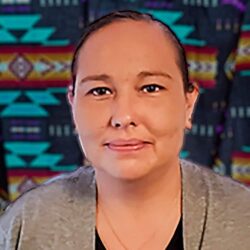
Memorie White Mountain, Executive Director of Mní Wičhóni Nakíčižiŋ Wouŋspe
Memorie is an enrolled member of the Cheyenne River Sioux Tribe but resides on the Standing Rock Sioux Reservation with her husband, children and grandchildren. She graduated with a Associates of Science degree in 2018 and a Bachelors of Early Education in 2020 at Sitting Bull College. She is also the co-founder of Iyuha Acu Youth Services. Her passion is to help create a better place for our youth to succeed in a safe and cultural environment within the community.
